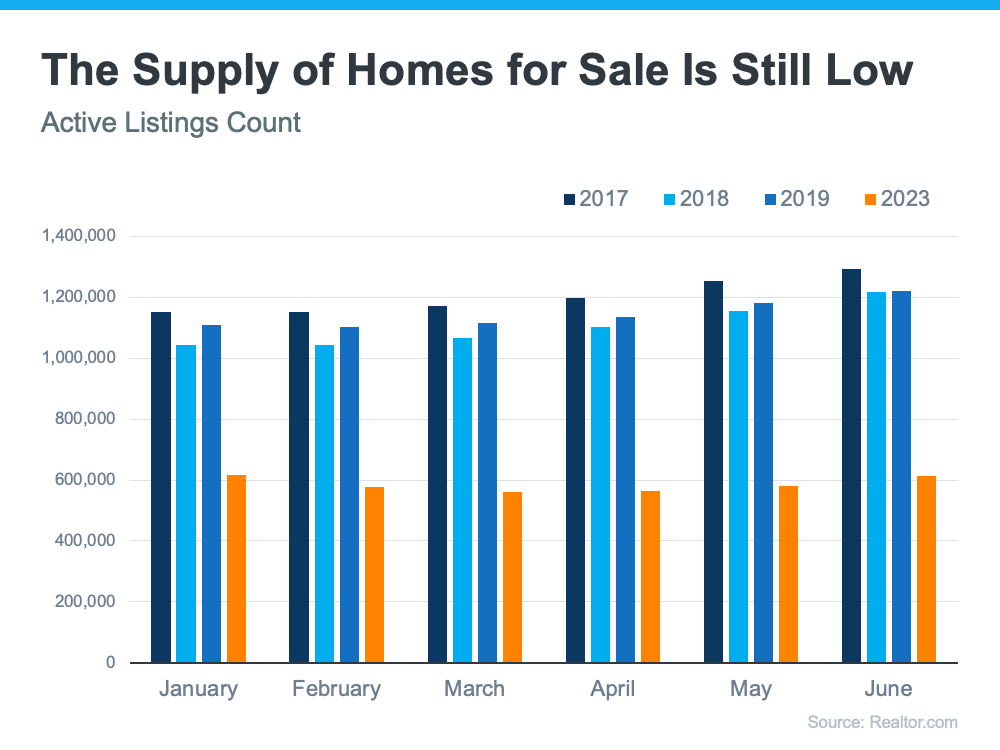Selling A House in the Media Area. What You Need to Get the Best Price

In today’s dynamic housing market, having a trusted real estate expert by your side is more crucial than ever. Whether you’re a first-time or repeat seller, an experienced agent can guide you through each unique step of the process, ensuring you make informed and confident decisions.
Not all agents operate the same way. A real estate specialist who understands current home prices, housing supply, and industry projections can provide optimal advice, separating fact from fiction and debunking sensationalized headlines with trustworthy data. As Jay Thompson, a Real Estate Industry Consultant, warns, clickbait headlines predicting doom for the industry often lead to fear and uncertainty among consumers.
Jason Lewris, Co-Founder and Chief Data Officer at Parcl, echoes this sentiment, stating that in the absence of reliable, updated information, real estate decisions are increasingly driven by fear, uncertainty, and doubt. However, it doesn’t have to be this way.
To make sure you get the best price for your house, you need to make sure that you select the best agent you can find. Hereis how to do that:
- Interview at least two agents and preferably three or four.
- Ask each agent what their processes are to make sure that you get the best price.
- Then listen and evaluate their answers to the following questions.
- What is their pricing plan and strategy?
- What is their marketing plan and strategy?
- Internet exposure sells most of the houses today. What is their Internet marketing plan?
- What is the sales price history for our area?
- What are the sales price projections for our area?
- How will they keep me informed of what is going on?
- Then select the agent you think is the most competent and with whom you feel the most comfortable.
- Of course selling a homeis always a two sided process. You have to find another place to live. That will be the subject of the next blog.
Here are some of the data with which your agent should be intimately familiar. There are three critical trends, Number of Sales, Sales Prices and Days on Market.
Number of Sales in the Media area (defined as Rose Tree Media, Radnor, Wallingford-Swarthmore and Garnet Valley School Districts): In a “Normal Year”, by July of each year, we would sell about 580 single family houses. This year we are at about 408 for a 30% decrease. That is the source for some of the headlines that the real estate market has gone to pieces and don’t make a move.
You might think that with sales way down, prices would be also. But, prices are stable and increasing. Just check out this chart.
| Media Area, Median Sale Price, Single Family Houses, 2021 through July 2023 | |||||||
| Month | Sale Price | Sale Price | Difference | % Diff | Sale Price | Difference | % Diff |
| 2021 | 2022 | 2023 | |||||
| Jan | $499,995 | $542,000 | $42,005 | 8.4% | $540,220 | ($1,780) | -0.3% |
| Feb | $372,500 | $459,500 | $87,000 | 23.4% | $484,050 | $24,550 | 5.3% |
| Mar | $550,000 | $475,000 | ($75,000) | -13.6% | $507,500 | $32,500 | 6.8% |
| Apr | $459,014 | $462,000 | $2,986 | 0.7% | $470,000 | $8,000 | 1.7% |
| May | $505,500 | $657,000 | $151,500 | 30.0% | $575,000 | ($82,000) | -12.5% |
| Jun | $549,500 | $580,000 | $30,500 | 5.6% | $572,500 | ($7,500) | -1.3% |
| Jul | $541,500 | $554,220 | $12,720 | 2.3% | $600,000 | $45,780 | 8.3% |
| Aug | $529,500 | $592,500 | $63,000 | 11.9% | |||
| Sep | $496,000 | $550,000 | $54,000 | 10.9% | |||
| Oct | $500,000 | $525,000 | $25,000 | 5.0% | |||
| Nov | $467,500 | $528,500 | $61,000 | 13.0% | |||
| Dec | $522,000 | $480,000 | ($42,000) | -8.0% | |||
| Annual | $499,417 | $533,810 | $34,393 | 6.9% | |||
| YTD,July | $496,858 | $532,817 | $35,959 | 7.2% | $535,610 | $2,793 | 0.5% |
| Summary: | Year Over Year Sales Price up 10 of 12 months, 2022 to 2021 | ||||||
| Year Over Year Sales Price up 4 of 7 months, 2023 to 2022 | |||||||
| Areas Included Wall-Swarth, Rose Tree Media, Radnor, Garnet Valley | |||||||
Year over year prices are up over the last 2 and 1/2 years and show no sign of slowing down.
And houses are selling very quickly. A “Normal” time to sell a home used to be about 30 days; now it is about a week, give or take a few days. That is very speedy.
The right agent can help you to take advantage of all of these trends.
In conclusion, if you’re seeking reliable advice and trusted information about our local housing market, let’s connect. You don’t have to navigate this journey alone.
Please look at this short video I prepared to communicate the most important points to you:
Just double click on this hyperlink to play the video: https://vid.us/h5cgvq
here is what you need to do to make the right decision for you
- Buyers: If you’ve been holding off on buying because you were worried the value of your home would go down, knowing home prices are stable and increasing is reasuring. It also gives you the opportunity to own something that usually becomes more valuable as time goes on.
- Sellers: If you’ve been waiting to sell your house because you were concerned about how changing home prices would affect its value, this should also reassure you. Even with the recent increase in mortgage rates, teaming with a real estate agent and getting your house on the market is the logical and smartest thing to do.
- It’s also important to remember that every local market is different. That’s why it’s essential to lean on an expert for the latest information on the market in your area if you’re planning to make a move. I would like to become that real estate expert upon whom you can lean.
- Do I think that now is a good time to buy that first house or to sell and make that move up buy? Again, absolutely yes.
- To get a quick update of what is new in real estate, click here to check out our new videos.
- Interested in what recent clients think of my service? Click here to read what they say.
- Interested to know what your house is worth? Click here to get the most extensive and accurate estimate of home value that is available on the Internet. No cost or obligation of course.
- No doubt, the housing market is changing, and it can be a confusing place right now. I suggest that we connect so that I can help you make confident and informed decisions about what’s happening. Minimize the fear or uncertainty that could change your plans. If you’re unsure about how to make sense of what’s going on in today’s housing market, text or call me at 484-574-4088 or go to my web site, (johnherreid.com) and lets set up a time to meet, either on line or in person. I have the software so that we can meet virtually and make the best use of your time.
- If you’re looking to make that move up buy this year, I believe now is a good time to do it. The best way to ensure you’re up to date on the latest market insights is to partner with a trusted real estate advisor. Let’s connect. I would like to interview for the job of becoming your trusted real estate advisor.
- One of the biggest benefits of owning a home, regardless of your income level, is that it provides financial stability and an avenue to build wealth. By selling your house and leveraging your equity, it can be easier to pay for your next home. Let’s connect to find out how much equity you have in your current home and how you can use it to fuel your next purchase.
- There are still clear opportunities for sellers this spring. If you’re wondering if it’s the right time to make a move, let’s connect today.
- There are plenty of buyers out there right now trying to find a home that fits their needs. That’s because the job market is strong, and many people have the stable income needed to seriously consider homeownership. To put your house on the market and get in on the action, let’s connect.



